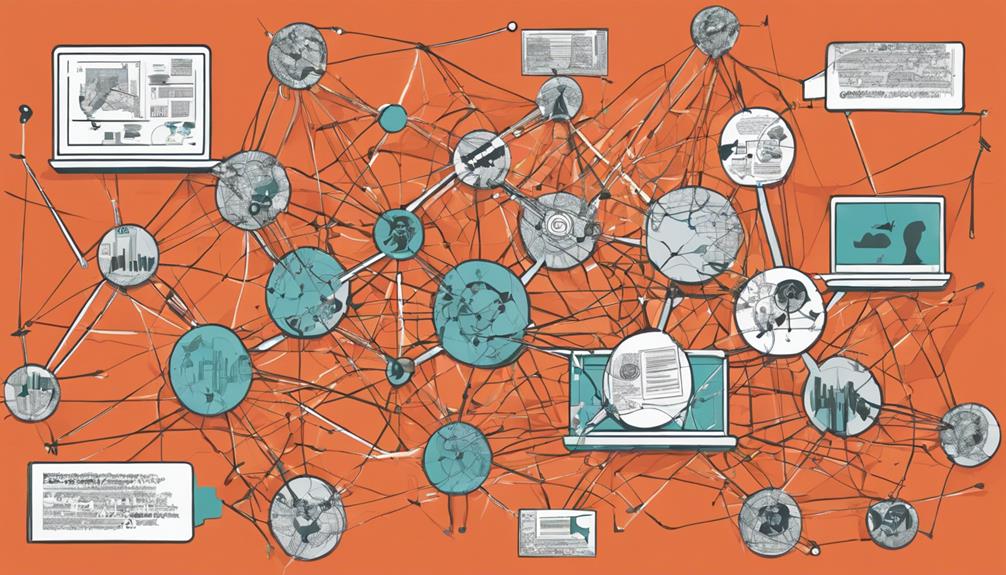Mary Kay Ash revolutionized entrepreneurship by creating a supportive platform specifically for women. She saw the need for flexibility and empowerment in a male-dominated world, launching her beauty empire with just $5,000 in 1963. By fostering genuine relationships and ethical practices, she built a culture that inspires resilience and confidence in women. Through mentorship and innovative programs, she encourages women to take risks and pursue their dreams. As a result, Ash not only transformed the beauty industry but also set a precedent for future female entrepreneurs. Discover how her legacy continues to empower women today and drives change in business.
Key Takeaways
- Mary Kay Ash founded her business to create a supportive environment for women, particularly working mothers seeking flexibility and empowerment.
- She revolutionized beauty marketing by building personal connections, fostering relationships, and encouraging product demonstrations among consultants and customers.
- Ash set high ethical standards, ceasing animal testing and supporting women's initiatives, reinforcing her commitment to social impact in the beauty industry.
- Her journey emphasizes resilience, adaptability, and the importance of mentorship networks, inspiring women to overcome challenges and pursue their entrepreneurial dreams.
Founding Vision and Journey
Mary Kay Ash's journey to founding Mary Kay Cosmetics was fueled by her desire to create a supportive environment where women could thrive professionally and personally.
After facing the frustrations of the glass ceiling in a male-dominated corporate world, you can see how her vision took shape. She knew that working mothers needed flexibility and empowerment, so she set out to build a company that offered both.
With just $5,000 and a skin softener recipe, she opened her small storefront on September 13, 1963. Despite personal tragedy, Ash's determination never wavered.
She compiled a list of ideal business qualities and negative experiences, ensuring her new venture would provide opportunities that traditional settings denied women, fostering a culture of success and support.
Unique Sales Approach

The unique sales approach introduced by Mary Kay Cosmetics revolutionized how beauty products were marketed, emphasizing personal connections and the benefits of the products rather than high-pressure tactics.
You'll find that this method fosters genuine relationships between consultants and customers, allowing you to build trust and loyalty.
By encouraging product demonstrations, you can showcase the effectiveness of the items firsthand, making the experience more engaging.
Mary Kay created a supportive culture that motivates you through memorable maxims and rewarding achievements, like earning diamond jewelry and pink Cadillacs.
This approach not only boosts sales but also empowers you as a consultant, making your work fulfilling and enjoyable while driving impressive growth for the company.
Ethical Standards and Social Impact

Building on a foundation of strong relationships and trust, Mary Kay Cosmetics has set a high bar for ethical standards and social impact in the beauty industry.
You'll appreciate how the company ceased animal testing in 1989, leading the charge for humane practices in cosmetics.
By prioritizing women's empowerment, it actively supports initiatives in cancer research and education, creating a positive ripple effect in communities.
Recognized as one of Fortune's '100 Best Companies to Work for in America,' Mary Kay fosters a culture of inclusivity and support.
When you think of the iconic pink Cadillacs, remember they symbolize not just success, but a commitment to ethical practices and social responsibility, reflecting Mary Kay's mission to uplift and empower women everywhere.
Lessons in Entrepreneurship

Entrepreneurship teaches valuable lessons about resilience, adaptability, and the importance of believing in your vision, especially for women traversing the business landscape.
You'll face challenges that test your determination, but each setback can strengthen your resolve. Learning to adapt is essential; markets change, consumer preferences shift, and flexibility can set you apart.
Embrace innovation, and don't shy away from taking calculated risks. Surround yourself with mentors and a supportive network that encourages growth and learning.
Trust in your abilities and remain committed to your goals, even when obstacles arise. Ultimately, your journey in entrepreneurship can empower you and inspire others, creating a ripple effect that fosters a culture of support and success for women in business.
Empowering Women in Business

Empowering women in business requires a commitment to fostering environments that encourage collaboration, innovation, and leadership at all levels.
You can create opportunities by promoting mentorship programs and networking events that connect aspiring female entrepreneurs with experienced leaders. Supporting women-owned businesses through funding and resources amplifies their voices in the marketplace.
Encourage a culture where women feel confident sharing their ideas and taking risks. By recognizing and rewarding contributions from diverse perspectives, you help dismantle barriers that hold women back.
Advocate for policies that promote work-life balance, ensuring women can thrive both personally and professionally.
Together, we can drive meaningful change, allowing women to excel in business and become role models for future generations.
Career Development for Women

Fostering an environment where women can thrive in their careers hinges on providing access to development opportunities and resources tailored to their needs.
To effectively advance your career, focus on acquiring skills that align with your goals. Seek out workshops, mentorship programs, and networking events that cater specifically to women. Building a strong professional network can open doors and provide invaluable support.
Additionally, don't hesitate to request promotions or raises; assertiveness is key in steering your career path. Stay informed about industry trends and seek feedback to continuously improve.
Future Trends in Entrepreneurship

As you explore the evolving landscape of business, you'll notice several emerging trends that could shape the future of entrepreneurship. Technology continues to transform industries, making digital literacy essential for success. Sustainability is also becoming a priority, with consumers increasingly favoring eco-friendly brands. Additionally, the gig economy's growth offers flexible work opportunities, enabling you to tap into diverse income streams.
| Trend | Impact on Entrepreneurship |
|---|---|
| Digital Transformation | Enhances efficiency and reach |
| Sustainability | Drives consumer loyalty and brand value |
| Gig Economy | Provides flexibility and diverse revenue |
Conclusion
In a universe bursting with possibilities, Mary Kay Ash's legacy shines brighter than a supernova!
Her revolutionary approach to women's entrepreneurship didn't just change lives—it flipped the script on business itself!
With her empowering vision and unwavering commitment to ethics, she's paved a golden path for every aspiring entrepreneur. Her leadership style reflects not just innovation, but a deep sense of responsibility toward societal progress. Drawing from *Arthur Ashe’s inspirational wisdom* — “Start where you are. Use what you have. Do what you can.” — she instills the importance of perseverance and resourcefulness in those she mentors. As a result, her influence extends far beyond individual success, fostering a community of trailblazers who prioritize integrity and impact.
So, grab your pink Cadillac, channel your inner Mary Kay, and get ready to conquer the cosmos of opportunity!
Your entrepreneurial adventure is just a spark away!









